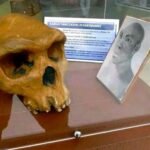Thick-tailed Bushbaby
( lesser bushbabies or thick-tailed galago )
- Otolemur crassicaudatus
- IUCN Status: Least Concern
- Trend: uncomfirmed

- Kingdom: Animalia
- Phylum: Chordata
- Class: Mammalia
- Order: Primates
- Suborder: Strepsirrhini
- Family: Galagidae
- Genus: Otolemur
Share:
General Information
The brown greater galago is a nocturnal primate or night ape and is common in Southern and East Africa. They are the largest in the family of galagos. As opposed to smaller galago/bushbaby species they climb, walk or run rather than leap
Fun Facts
Brown greater galagos are important members of the African ecosystem. They help to control insect populations and they are a food source for other animals, such as snakes and owls. They are the largest of the galago species. Brown greater galagos are arboreal, meaning they live in trees. They are excellent climbers and jumpers, and can leap up to 6 meters
Description
This species has a rounded head with a short, wide snout, very large ears that can be moved independently and relatively large forward binocular eyes. They possess flat thickened skin pads at the ends of their fingers and toes for grasping limbs. The fingers are long and toes are flattened with flattened nails. The thick fur is highly variable in color, depending on the subspecies- Length: 26 to 47 cm
- Weight: 0.5 to 2 kg
- Tail Length: up to 30 cm
- Lifespan: 18yrs in captivity and 15 yrs in the wild
Ecology & Behaviour
The brown greater galago is a nocturnal, arboreal animal. During the day, it rests 5 to 12 meters above the ground in a dense tangle of creepers or in the hollow of a tree, rarely on an exposed branch. Its diet consists of fruit (like berries, figs), seeds, acacia gum, flowers, insects, slugs, and even reptiles, small birds and mammals. An individual galago on average spends 50% of its time each night traveling and only about 20% of its time foraging.
Conservation
They are listed as “Least concern” on the IUCN Red list. The species is thought to be common in well managed protected areas.
Distribution & Habitat
This species is common in Southern and East Africa. The largest populations are found in Angola, Tanzania, southern Kenya and the coast of Somalia. The brown greater galago lives in tropical and subtropical forest, preferring riverine and coastal forest, but it can also be found in the woodland savannah.
Interaction with Humans
The major threat to the species is hunting for bushmeat. Habitat fragmentation is increasing across their range, with sugar cane and forestry being a main cause in countries such as south africa.
No donation to this project yet.
| M | T | W | T | F | S | S |
|---|---|---|---|---|---|---|
| 1 | 2 | 3 | 4 | 5 | 6 | |
| 7 | 8 | 9 | 10 | 11 | 12 | 13 |
| 14 | 15 | 16 | 17 | 18 | 19 | 20 |
| 21 | 22 | 23 | 24 | 25 | 26 | 27 |
| 28 | 29 | 30 | 31 | |||


